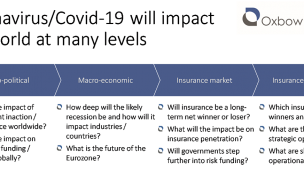Six characteristics of an Agile Strategy™ project
29 July, 2016 Chris Sandilands
Last month I laid out in an article post why traditional approaches to strategy consulting do not meet the needs of modern organisations. In summary: they can be relied upon to generate lots of PowerPoint but not much else.
Feedback to last month’s blog was lively: many people on both the client and consulting side of the fence recognised the problem I was describing. And people liked our solution: Agile Strategy™.
In this blog post I’m going to expand on six of the characteristics of an Agile Strategy™ project.
1. Strategy is developed through iterative execution, not academic study.
A principle of Agile Strategy™ is that strategy is best developed organically, learning from activity in the real world. Learnings include both market feedback on an idea and internal feedback on “doability” (a great idea is worthless if it can’t be delivered). Agile Strategy™ therefore moves from the upfront direction setting phase to the execution phase as quickly as possible.
One of our clients, a leading online player, illustrated this point nicely in a recent meeting. We were discussing the implementation of some thinking we had jointly developed. Instead of requesting us to flesh out the strategy in detail in the next phase of work, the client had developed a business model canvas and was talking about implementation hypotheses that needed to be tested to define a strategy.
We love this thinking.
2. Flexible team structures
Agile Strategy™ requires different skills and staffing levels at different times: what you probably don’t need is a manager plus two (generalist) consultant project team for a fixed period of time.
This characteristic came alive in some work we recently did for a reinsurer to build a new business unit, as the illustration below shows. We started with a strategy team, comprising Partners from Oxbow Partners. We then needed to do some detailed technology work and introduced our Consulting CTO, Chris Scollo. Then we ran a team, overseen by Oxbow Partners, comprising an experienced insurance ops manager from Oxbow Partners, a leading light in pet and home insurance from our Expert Network to provide cutting-edge content (without having to deploy five juniors to do the bottom-up research) and our CTO now working on an interim basis.
3. Collaborative, multi-skilled project teams
A fundamental principle of Agile methodology is regular “scrum” meetings, where teams come together and define and review progress. We have brought this principle successfully into Agile Strategy™. In my previous I talked about how the separation of strategy and implementation caused an unhelpful tension between the strategy and implementation teams. Agile Strategy™ is such a powerful process because it builds multi-skills project teams and gets them working together collaboratively.
4. PowerPoint is the means to the end, not the end
Agile Strategy™ is very clear that PowerPoint is not the output. Instead, PowerPoint is used in the way God intended: as a means of communication. Agile Strategy™ seeks to achieve profit-enhancing outcomes with the minimum PowerPoint possible.
5. Phased handover
In Agile Strategy™, traditional strategy and implementation phases are merged. But what about handover? We see Agile Strategy™ teams as “advance implementation” personnel – people who can get things moving whilst clients either work out what permanent resource they need. As such, the advance team expects to hand over progressively to internal temp and perm resources. This is a much more effective approach than traditional consulting approaches, where handovers are generally a meeting between two teams where the departing team runs through PowerPoint and the incoming team’s eyes glaze over.
6. Engaged, motivated and happy staff
Last but not least, people love being part of Agile Strategy™ teams. Employees at all levels feel engaged by the process – everyone contributes to decision making and sees progress being made every week.
We would be delighted to discuss with you how you can drive your business forward using Agile Strategy™. Get in touch here.



